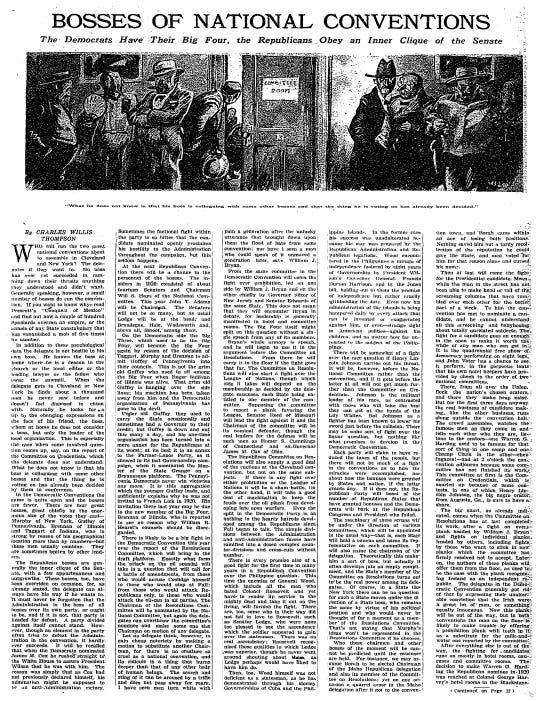Bosses of National Conventions
A 1924 New York Times Magazine preview of that summer's upcoming Democratic National Convention called the bid of John W. Davis "his impossible plea for nomination." He ended up getting the nod.
Davis was a former U.S. House member from West Virginia, Solicitor General (the federal government's main lawyer who argues before the Supreme Court), and Ambassador to Great Britain. By 1924, he no longer actually served in government, instead working as at attorney in private practice.
As the journalist Charles Willis Thompson wrote for NYT Mag that year:
"In the Democratic Convention the bosses will present Senator Ralston of Indiana, and William G. McAdoo will presumably make his hopeless fight for vindication, while Governor Smith will bedevil the situation with his impossible plea for nomination, and Senator Underwood will reap the ungrateful fruits of his thoughtful and well-considered campaign."
However, Thompson allowed for the possibility that a dark horse candidate could claim the nomination instead:
"At this distance it looks like Coolidge on the first ballot for the Republicans, and a long climb up the ladder for the Democrats, as in 1912 and 1920, with some one [sic] emerging at the top who wasn't visible when the climb started."
Indeed, the Democrats took 103 ballots to select their candidate, to this day the most of all time. In fact, the last time a major-party convention even went to a second ballot was the Democrats in 1952.
Davis only finished in seventh place during the initial ballot, behind:
Former Treasury Secretary (and future California Sen.) William G. McAdoo
New York Gov. (and future 1928 nominee) Al Smith
Former Ohio Gov. (and prior 1920 nominee) James M. Cox
Mississippi Sen. Pat Harrison
Alabama Sen. Oscar Underwood
New Jersey Gov. George S. Silzer
(The aforementioned Indiana Sen. Samuel M. Ralston, who Thompson mentioned as one of the top contenders, originally finished eighth.)
Thompson also correctly predicted that incumbent President Calvin Coolidge would win the Republican nomination on the first ballot.
Perhaps the Democrats should have nominated one of their other top contenders instead, since Coolidge ended up defeating Smith in a rout: 72% to 26% of the Electoral College, plus 54% to 29% of the popular vote.
(The Progressive Party candidate, former Wisconsin Gov. Robert M. La Follette, earned 17% of the popular vote and won his home state of Wisconsin.)
In his later life, Davis would come to disagree with many of Franklin D. Roosevelt's policies and actually end up supporting the Republican presidential nominees in 1936, 1940, and 1944.
Bosses of National Conventions
Published: Sunday, April 13, 1924


